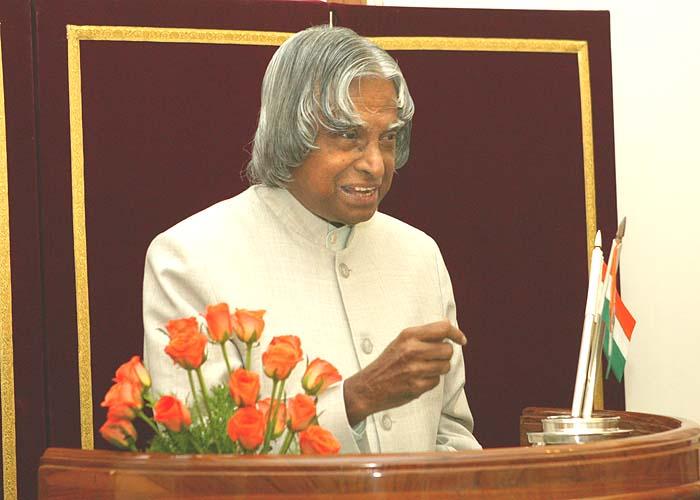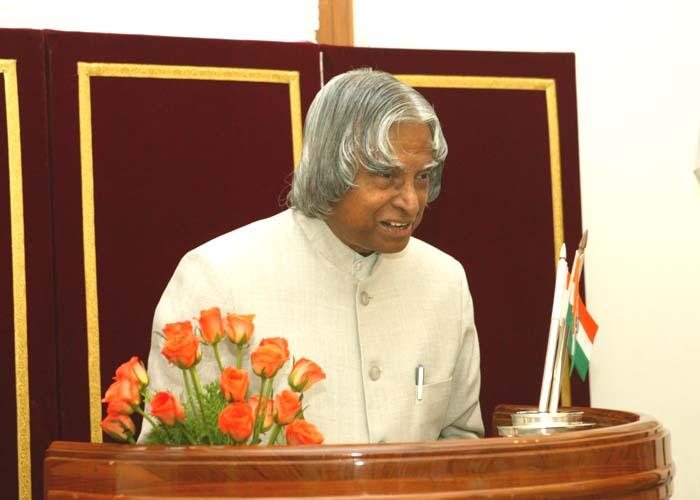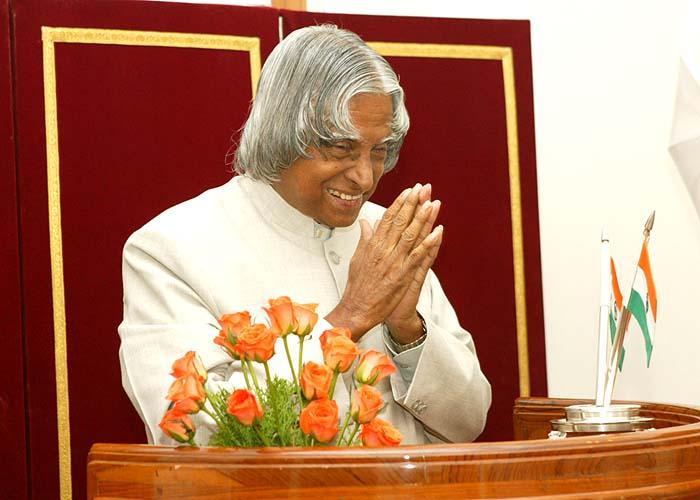Address At The 52nd Tamilnadu State Ophthalmic Conference
Through Video Conference From New Delhi : 14-08-2004
Synergy in Eye Care Mission
I am delighted to participate in the 52nd Tamilnadu State Ophthalmic Conference. I greet the organizers, ophthalmologists, distinguished medical practitioners, medical technologists, pharmaceutical specialists, medical industrialists and distinguished guests on this occasion. I appreciate the pioneering service rendered by Arvind Eye hospitals to the community through its network of eye care centres and free eye care camps in various parts of the country. Prevention of blindness and eye care is Tamilnadu is top.
Healthcare Technology Vision
You may be aware, a Healthcare Technology vision document was evolved as part of Technology Vision 2020, a few years back. Prof M. S. Valiathan led the team in evolving the Healthcare vision document. A number of experts in the area of ophthalmology were involved in the task teams. Many important issues were brought in the document. It is said that in India, minimum 20 million people in a billion population are visually handicapped, while 25 million people are partially visually handicapped. The population growth coupled with increase in life expectancy will only lead to increase in the number of blind and visually handicapped. 80% of the cause of blindness is due to cataract. The other causes have been identified as cornea, glaucoma, diabetes and other vitreo retinal disorders and vitamin-A deficiency etc. The expert team had identified preventive technologies, diagnostic technologies and curative corrective technologies. One of the major recommendations is to develop eye lasers with slit lamps for post glaucoma and cataract patients treatment and large-scale production of cost effective Vitamin-A tablets. Recently, laser treatment for diabetic retinopathy to arrest eye bleeding has been added. Above all, education and management system for eye care and also creating a human feeling to increase large number of eligible eye donors have to be generated.
National Mission
A national mission for fast track treatment method has to be evolved involving mission-oriented doctors throughout the country. This team should organize series of eye camps, reinforcing many eye hospitals with technology to increase the treated population. In doing so, integration of minds is possible and governmental support can be made easier. India already has a national programme for control of blindness and also Vision 2020: The Right to Sight initiative (Global). Throughout the country and also around the world, each and everyone are sympathetic to the visually handicapped who need vision and prevention of blindness. This service oriented attitude towards visually handicapped can bring together a number of partners in the national mission.
Tele-Ophthalmology
Once we have the connectivity, then there should be a universal tele-ophthalmology system in place for making full utilization of the connectivity to bring Ophthalmologic specialist in virtual clinics in a multi eye clinic environment with seamless two-way interaction between the doctors and patients in a collaborative environment. This system should enable the eye specialist to diagnose the particular patient and also seek expert opinion from distance doctors located in remote areas. Such sharing of knowledge will provide cost effective holistic treatment for the patients in the specialist areas like corneal blindness, surgical complications, posterior segment disorder & retinitis etc. The same system can be can be transformed into a virtual ophthalmic institute. From this institute?s studio at the eye hospitals, specialist lecture can reach any remote corner but also enable a good eye specialist in the remote area to provide multicast information to other participants of the system. Thirdly the same system can be used to offer practical training to eye doctor on the intricacies of eye operation through a ?Virtual Operation Theater?. Such is the power of Tele-Ophthalmology. We have implemented such a unique system in Rashtrapati Bhavan.
Need for indigenous medical devices & systems
You are aware that approximately twenty six percent of our population is still below the poverty line and medical care has to be provided to a large population. I was discussing this problem with some of my doctor friends and those connected with health care. I realized that the major problem in Indian health care delivery system including the area of ophthalmology is the near total dependency in medical imports of diagnostic and therapeutic equipment and devices including consumables. Every year, about Rs 3000 crores plus worth of medical devices and equipment are being imported. While the common man seldom buys anything imported, he is made to purchase or pay partly for the cost of the imported gadgets for healthcare. This clearly brings out that, we need to create an infrastructure capable to produce our own medical devices, consumables and equipment, based on the technology available and to be developed within the country, at affordable cost.
Basic research needs to focus in the areas of - molecular genetics of inherited eye diseases, microbiology of eye infections, biochemical features of cataract, and stem cell technology for reconstruction of the damaged ocular outer surface. Our clinical researches need to study the suitability of drugs and lenses, as also prospective and retrospective research on problems seen in the clinic. The Stem Cell technology is at the cutting edge, practiced by no more than three or four centres across the globe. It involves the harvesting of stem cells from the limbus of the eye and explant - culturing them such that the resultant material can be used to reconstruct the damaged outer surface of the eye, thus enabling it to better accept a corneal graft. The L.V. Prasad Eye Institute, has succeeded in translating this technology from the Petri dish to the patient?s eye. Such advanced technologies need to be effectively deployed to provide critical eye care to the majority of the population.
Stem Cell: For Restoration of Vision
The recent identification and characterization of progenitors with stem cell properties has opened new avenues that may be useful for treating functional impairments caused by the death of specific cell population. Stromal and neuronal degeneration are the causes of debilitating visual impairment associated with many ocular diseases, such as degenerative diseases of cornea, retinitis pigmentosa (RP), age- related macular degeneration (AMD) and glaucoma. The stem cells may help restore vision in patient who has these diseases, by repopulating or rescuing the damaged ocular surface cells or retinal cells from further degeneration. The stem cells can be used for two different but complimentary ways to treat the degenerative diseases of the eye.
1. Cell Replacement Therapy:
Cell replacement therapy exploits the plasticity of stem cells progenitors to replace cells and repair tissue damage by diseases or injury.
2. Ex vivo gene therapy:
Ex-vivo gene therapy could be used effectively as a neuro protective strategy to prevent retinal cell loss in retinitis pigmentosa (RP), age-related muscular degeneration (AMD) and terminal stages of glaucoma.
Ophthalmologists Network
There are three major eye care hospitals in the southern part of india such as Arvind Eye Hospital, Madurai, Sankara Nethralya, Chennai and LV Prasad Eye institute, Hyderabad are rendering excellent eye care service in the region. It will be useful to network all the three hospitals through a tele-education network and share the experience of specialists in various fields of ophthalmology. They can have weekly tele-meetings in which the special and unique experiences and the special strategies adopted by the doctors can be discussed. This will enable knowledge sharing and feasible solutions to certain special class of diseases, which are being seen for the first time in a particular region. Also the network can be used to conduct research on special areas including stem cell research. This will also help in sharing of high cost facilities required for treatment of eye diseases.
Research Area
Nano technology is finding large-scale application in drug delivery system, biomedical application and nano structure and devices. The low dimensionality of many nano-structures, in which electrons are free to move in only two, one or even zero dimensions, has a profound effect on their chemical, electronic and optical properties. The practical application of these effects is only just beginning to be realized in such devices as lasers based on quantum wires and quantum dots. By exploiting quantum behavior, researchers can tailor the basic characteristics of the materials and devices to achieve greater efficiency, faster speeds and high packing densities devices for electronic, photonic, catalytic, magnetic and biomedical applications. For example, a neural stimulatory microsystem requires fairly uniform nano-sized electrode arrays for focal stimulation of neural tissue for the treatment of blindness to Parkinson diseases, Huntington disease, and an array of other neurological disorders.
Focal stimulation requires electrodes or groups of electrodes on the order of 100 nano meters or less with spacing of no more than 5 micron. Localized structures of this sort would mimic the actions of rods and cones in the retina of the eye. This type of structure is fundamental to the hopes of developing a useful prosthesis device to restore vision in certain eye diseases such as retinitis pigmentosa and perhaps macular degeneration.
All the major eye care centres in the southern region can jointly establish in collaboration with international institutions a Nano Technology Research Foundation for eye care and bio- medical applications.
Ophthalmologic communication
Recently, there was a meeting of cured patients, their doctors and a few social workers. One important result was discussed. The relationship between the patient and doctor extends to patients? family and doctor in medical care. This in turn, transmits effective messages from one family to another family on advice to prevent the eye diseases, necessity of periodic checks, the dietary habits and the need for life style changes including eye exercise for good eye health. Actually, I believe this good contact between the doctor and patients is comparable to that of a teacher and student. I request every doctor to play the role of a teacher in advising every family on eye disease prevention and methods to lead a healthy life. I hope you will find time for this noble action.
Conclusion
?Defect free vision for all? should be our national mission. For realizing this mission, I suggest you to focus your attention on the eye care for children. The eye problems of the children can be corrected, if diagnosed early. Such programmes should aim at screening all the children. A team of paramedical personnel visits nearby schools and villages and examine children for possible vision defects. Any one having defective vision or any obvious complaints should be sent to the Institute for further investigation and treatment.
We have the best of doctors and technologists in India. We have core competence in design and software engineering. Emerging technologies in virtual reality and micro machines will transform the healthcare scenario. This transformation should lead to helping the people who cannot afford the modern medical care. To improve the availability of eye care facility to the rural masses, I recommend provision of mobile eye clinics by all the eye care centres. Also I find major eye care centres are available only in southern part of India. L.V. Prasad Eye Institute, Sankara Nethralaya and Arvind Eye Hospital and other reputed eye care institutions should create eye care facility in rest of the country to cover the length and breadth of the nation.
I am sure that the partnership of ophthalmologists, vision scientists and ophthalmologists equipment manufactures and industrialists will lead to high quality research in ophthalmology enabling India to succeed in the mission of ?Vision for All?.
May God Bless you.
Question and Answer session
1. What are your sources of joy and contentment as a Scientist and as a President of India?
Dr. Panneer Selvam - Erode
Ans: As a President of India, seeing the smiles on one billion faces is the source of joy. As a scientist, application of science and technology for human welfare is my joy.
2. Apart from the indigenous laser are we going to get any other gift from you for the field of Ophthalmology?
Dr. S.S. Sukumar - Erode
Ans: SBMT ? Society for Biomedical technology has given unique products to the country.
1. Dhristi Laser 2. Low Vision Enhancement lens 3. Intra ocular Implant (Orbital implants) 4. Definitely a tele-medicine and tele-education delivery system, which can provide virtual laboratory, virtual classroom and virtual treatment centre for ophthalmologists and the patients is available indigenously, which we have implemented at Rashtrapati Bhavan. We will work together so that tele-ophthalmologists will get the benefit of it.
3. How do you think we can collaborate all the big eye care centers in the country to effectively deliver quality care to all?
Dr. Venkatesh - Pondichery
Ans: There are three major eye centres in south india, Aravind Eye hospital, Sankara Nethralaya and LV Prasad eye institute. All these three institutes can be networked and delivery quality eye care to the all the patients in south india. In addition, you should also establish certain key centres, in the northern region as is being presently done by LV Prasad eye institute at Bhuvaneshwar and Raipur. All the three major centre can have a joint mission on application of stem cell treatment for difficult and complex eye problems.
4. What is your secret of achieving one?s dream?
Dr. Shrishkumar - Madurai
Ans: Sweat, Sweat and Sweat. Problem will always arise in your work. Defeat the defeatist tendencies. You should not be worried of the problem and you should become the master of the problem. With persistent effort, you should win.
5. What role do you envisage for the trade people in the ophthalmic industry to improve the eye care situation in our country.
Dr. Gunal ? Topcon Company, Mumbai
Ans: There are number of eye care equipments, consumables, instruments and products still being imported. The trade and business community can work together and find cost effective and innovative solutions for making the eye treatment affordable for common man. Mobile eye clinics can be provided by the business community for conducting eye camps for insitu treatment.



